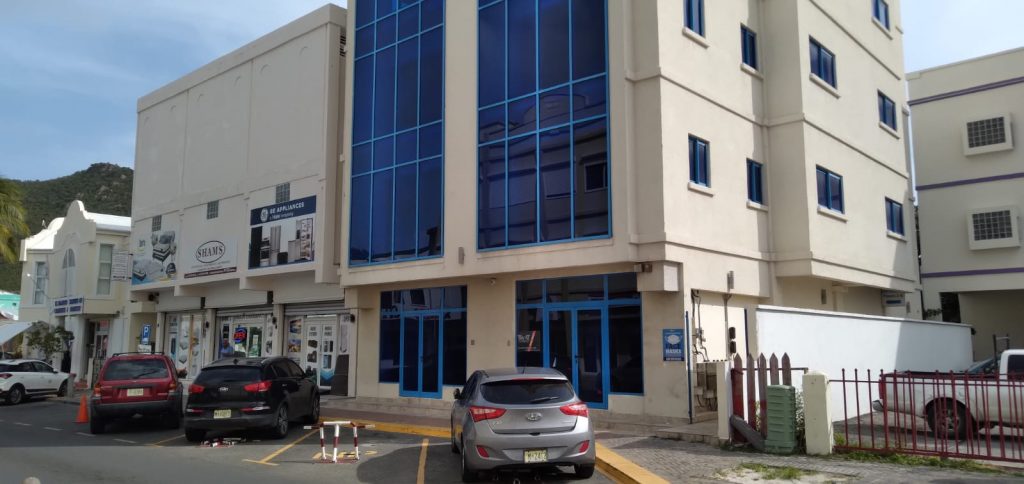BTP paid nothing to government since 2017

PHILIPSBURG – The report Retrospective – Ten years of the General Audit Chamber – revisits the state of affairs at the Bureau Telecommunication and Post (BTP), five years after it first took a closer look at this institution. The situation has not improved: BTP is not transferring funds to the government as it is required to do on a quarterly basis and its director Anthony Carty is unaware of TEATT-Ministry’s intention to buy the BTP building on Cannegieter Street.
Related article: Audit Chamber report reveals abuse of public funds
The national budget projects income of 1.9 million guilders (a bit more than $1 million) from BTP in 2020, but BTP has not transferred any money to the treasury since 2017. BTP’s budget projects a net income of 2.34 million guilders ($1.3 million) this year. ‘This money should be paid to government,” the audit report notes.
Between 2015 and 2019 BTP’s income totaled 17.09 million guilders ($9.5 million) but according to the Ministry of Finance it transferred only 2.96 million ($1.65 million). BTP claims that it paid the government 4.5 million guilders ($2.5 million) – so what happened to the difference of 1.54 million (more than $860,000)?
At the beginning of 2020 BTP’s payment arrears to the government amounted to approximately 10 million guilders (approximately $5.6 million). “In August part of the arrears was compensated against the government’s debt to TelEm and against TelEm’s debt to BTP,” the audit report states.
The government’s intention to buy the BTP building on Cannegieter Street for 8 million guilders ($4.47 million) also caught the Audit Chamber’s attention. BTP-director Carty told auditors that he is unaware of the purchase-plan; all he knows is that the government intends to move several departments into the building.
The Audit Chamber indicates in its report what ought to happen with the proceeds of the transaction. “If the government buys the building, the funds paid to BTP should flow to the treasury after deduction of costs. The building was initially bought with a mortgage that has been partially repaid. That part also flows to the treasury and the outstanding mortgage would be paid with public funds.”
The report does not indicate that BTP’s outstanding debt to the government should also become a part of this deal.
BTP first became the target of negative attention when the Audit Chamber published a report about it in 2015. It noted for instance that director Anthony Carty, once a cable welder at TelEm, was earning more than the prime minister while he had “no performance contract, little to no accountability and practically carte blanche with his budget.”
The now defunct newspaper Today put Carty’s salary in a story published on November 25, 2015, at 32,000 guilders ($17,877) per month, or $214,525 per year – 54.9 percent above the salary of the prime minister in 2010.
The newspaper also dove into the history of the BTP building. Talks about buying the building date back to February 2011. Carl Critchlow, director of construction company Taliesin, bought the building nine to ten months later from Claudwick Charles Peterson for $700,000.
On February 11, 2013, BTP bought the building for $6.6 million. That caught the attention of Finance Minister Martin Hassink who asked Independent Consulting Engineers (ICE) for an appraisal of the property. According to ICE the market value of the building was $4.1 million, the auction value $3.1 million while reconstruction costs amounted to $2.8 million.
Attorney Peggy Ann Brandon, who was at the time Chief Executive Officer of BTP, said at the time that another appraisal, by David Morrison, put the building’s value at $7.8 million, thereby suggesting that BTP got a good deal from Critchlow.
In this context it seems prudent to note that ICE appraised the value of Mullet Bay in 2002 at $68.3 million. Three years later Morrison came up with a completely different number: $242.5 million.
Brandon told the newspaper that the responsibility for the purchase was not hers, but that of two ministers whom she did not mention by name but that were identified by the newspaper as Romeo Pantophlet and Ted Richardson.
The anti-corruption taskforce TBO initiated an investigation into irregularities at BTP in November 2018. In the course of this investigation TBO-officers searched the offices of construction company Taliesin and the house of its director Carl Critchlow. The focus is on the construction costs of the building, the purchase price and consulting fees. Investigators also searched the homes of attorney Brandon, the law offices and Duncan and Brandon and the home of Judith de Weever, a Duncan and Brandon employee who is also the director of ACTIS NV, a company that was appointed by Minister Pantophlet in 2012 as numbering resource manager for St. Maarten.
The Audit Chamber wondered in 2015 why this job was given to ACTIS and why management of the numbering plan was not done by BTP’s Chief Operating Officer.
###
Download this report here: Retrospective – Ten years of the General Audit Chamber
For more details, readers can consult our BTP dossier here>>>























